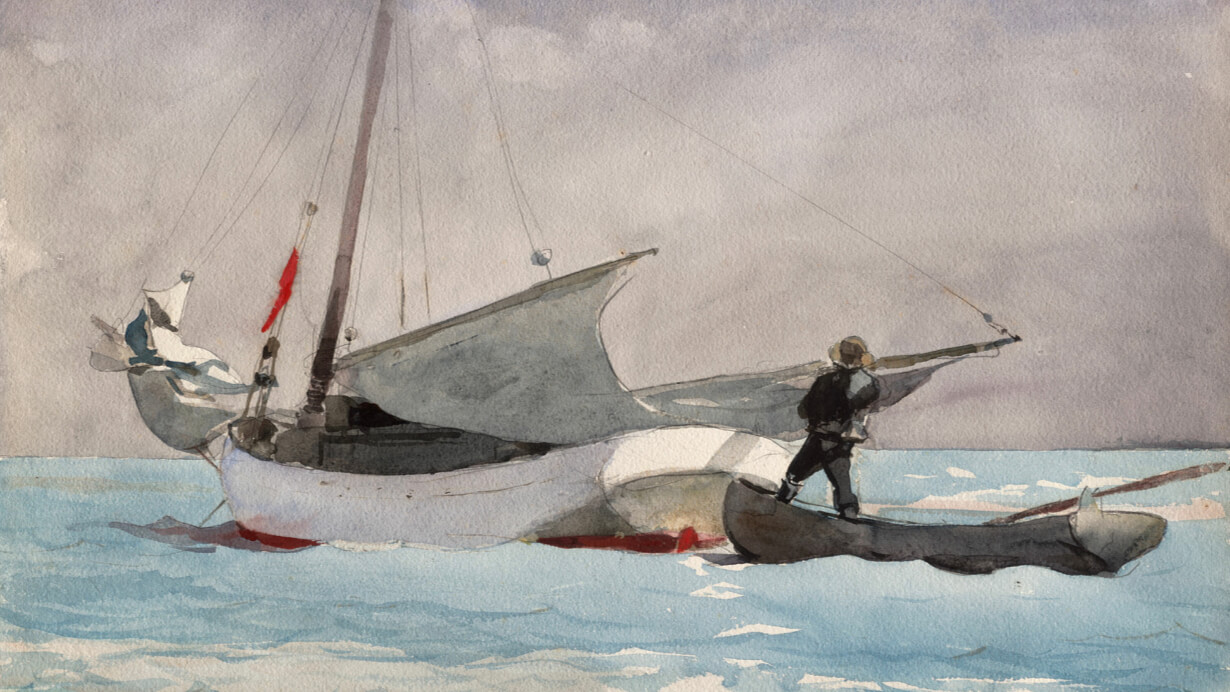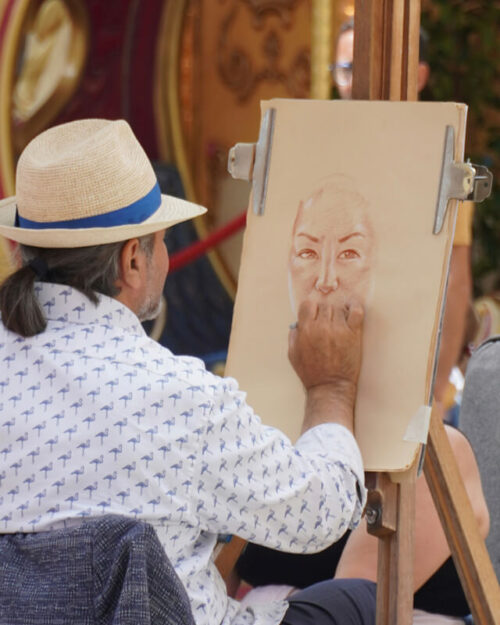Watercolor painting, with its pigmentation and transparency, offers an unparalleled avenue of expression for artists. At Blockx, we understand that mastering this medium requires not only patience and practice, but also a deep understanding of certain essential techniques. Here are some key tips and techniques for those wishing to explore the riches of watercolor.
1. Understanding the material
Choice of paper: our Clairefontaine watercolor paper, with its different textures and weights, adapts to all your creative desires. The torchon-grain paper, perfect for textured effects, absorbs paint generously. While the smoother, satin-grain option guarantees unrivalled precision for fine details. Finally, the versatility of the fine grain adapts to all painting practices.
Brush selection: Watercolor brushes, whether in natural bristles for optimum absorption or synthetics for long-lasting durability, offer the artist the control and flexibility needed for any technique. Round brushes are a versatile choice, allowing both precision and freer movement, while flat brushes are ideal for washes.
Color palette: Start with a carefully crafted selection of primary colors. Learning to mix your own shades from our range is essential to deploying a unique color harmony.
2. Master basic techniques
Wet-on-wet technique
The “wet-on-wet” technique is a fascinating way for artists to appreciate the fluidity and interaction of colors on paper. First, prepare your workspace by making sure you have enough water and paint on hand. Wet the watercolor paper evenly with a broad brush or sponge to create a moist surface without excess water. Then fill the brush with diluted paint and carefully apply the watercolor to the damp paper. Watch the paint spread and mix with the water, creating unique and often unpredictable effects. This technique is ideal for creating backgrounds, cloudy skies or light and shade effects. The trick is to let the water do its job of guiding the paint without trying to completely control the result. Allow to dry completely before adding details or extra layers.
Wet-on-dry technique
The “wet-on-dry” technique gives artists more control over their work, making this method ideal for fine details and textures. Start with completely dry watercolor paper. Choose a brush suitable for the details you wish to paint, dip the brush in sufficiently diluted watercolor and apply it directly to the paper. The color stays exactly where you apply it, allowing you to accurately represent shapes and lines. This method is ideal for drawing objects, figures or anything that requires clear definition. Adjust the amount of water in the mixture to suit the pigmentation of the color, creating effects ranging from translucent to opaque. Patience is the key. Allow each coat to dry completely before applying a new one, to maintain clean edges and color purity.
Dry-on-wet technique
“Dry-on-wet” is an advanced technique that lets you add texture and detail to an already wet background. In this method, a damp primer is first applied to the paper, similar to the “wet-on-wet” method. Then, without waiting for the paper to dry, use a brush with less water and more paint to add elements to the still-wet background. This technique allows you to spread the paint easily, gives you more control than wet-on-wet, and creates interesting textural effects to highlight specific areas, for example. Finding the right balance between paper wetness and paint consistency is the key to mastering this technique successfully. Experiment with different background drying times to see how they affect color distribution and develop your own style.
Dry-on-dry technique
The “dry on dry” technique is the most controlled, precise and perfect for adding finishing touches and details, or for working on small, intricate areas. Make sure paper and brush are completely dry. For a darker color, add slightly diluted paint to the brush and apply it exactly where you want it. This method allows you to be very precise when drawing elements and is ideal for textures, details or brilliant highlights. Dry on dry requires a steady hand. This approach can also be used when layering colors, adding depth and dimension to your artwork without the risk of mixing or blurring previous layers.
Each of these techniques has its own challenges and benefits, and your ability to master watercolor depends on your understanding and judicious application of each technique. Practice regularly, be patient and don’t hesitate to experiment to discover new ways of expressing your creativity with watercolor.
3. Play with color and light
Transparency: the signature of Blockx watercolors lies in their ability to superimpose colors while maintaining exceptional luminosity and clarity, offering depth and dimension to your work.
Contrast: the interplay between warm and cool colors is essential to guide the eye through the composition. A technique that our watercolors make intuitive.
Leave the paper white: by preserving certain areas of paper unpainted, you capture the purest light without resorting to opaque white. A practice where the quality of Clairefontaine paper makes all the difference.
4. Practice water control
Water control is essential to watercolor practice, as it determines transparency, fluidity and color intensity. Start by experimenting with different levels of humidity on your paper and brush to understand its impact on the paint. Using a brush with too much water on dry paper can excessively dilute your color, while a brush that’s too dry on damp paper may not diffuse as desired. To master this technique, practice wash painting by varying the amount of water, then observe how this affects color luminosity and saturation. Finally, don’t forget that drying time plays a crucial role; learning to anticipate and use this factor can transform your watercolor works.
5. Explore advanced techniques
Scraping and texturing: our watercolors and paper allow you to use techniques like scraping to add dynamism and texture, revealing unexpected layers of color.
Masking: protect desired areas with masking fluid, designed to remove cleanly, preserving the whiteness and luminosity of the paper beneath.
6. Practice and patience
Practice and patience are the cornerstones of learning watercolor, a medium that celebrates subtlety and unpredictability. Start by setting yourself regular painting sessions, however short, to explore different techniques and subjects. The importance of repetition cannot be underestimated; each brushstroke on paper enriches your understanding of the behaviors of water and color. Allow yourself the freedom to experiment without fear of mistakes, as they are often a source of learning and innovation. Patience here means recognizing that mastery comes with time and experience. Celebrate your progress, whatever it may be, and remain open to the constant evolution of your style and skills. The beauty of watercolor lies in its learning process, where each work is a step toward a richer, more personal expression.



